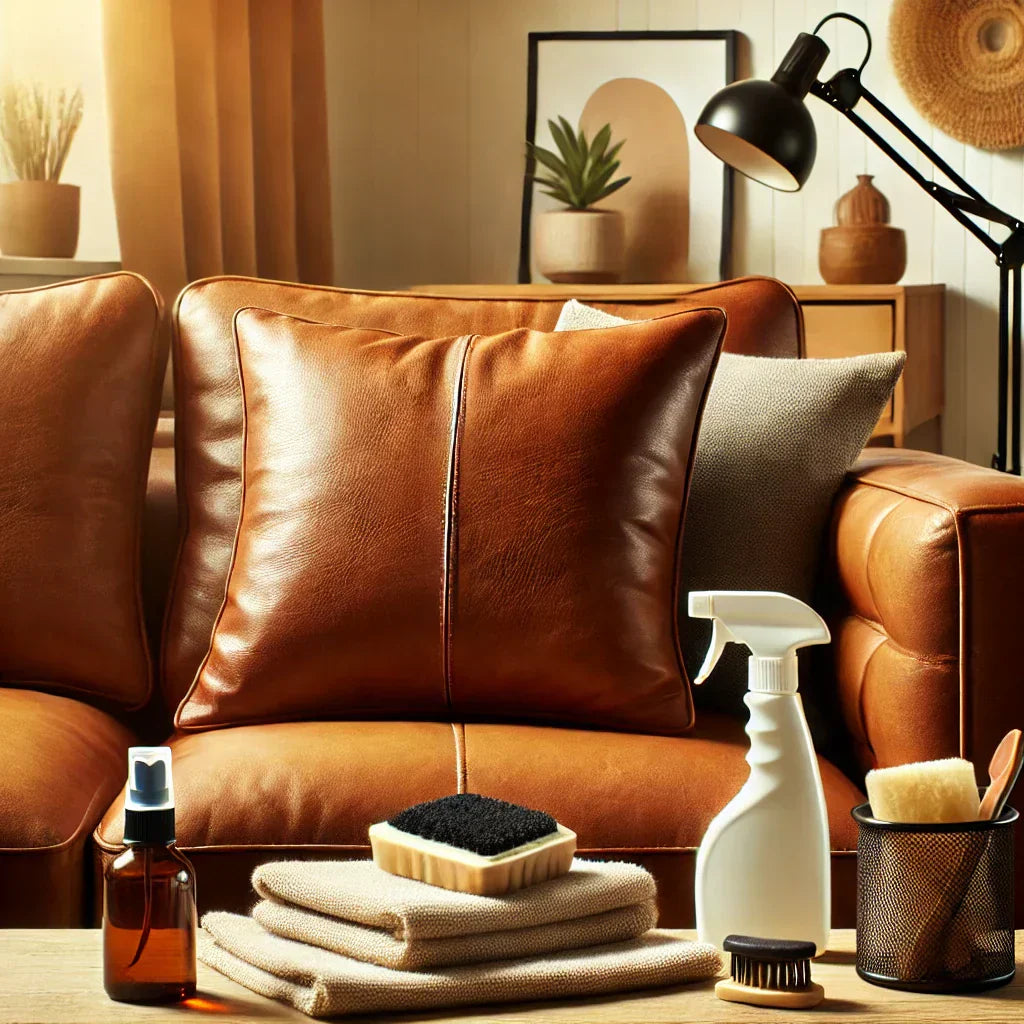
How to Clean Leather Cushion Covers
Share
"Leather is luxury, but it’s also a responsibility." This quote rings especially true when it comes to maintaining leather cushion covers. Leather, with its natural beauty and timeless appeal, can elevate any living space. But its charm doesn’t come without care. Neglect can lead to cracks, stains, and a worn-out appearance. On the flip side, proper cleaning and conditioning can make your leather cushion covers last a lifetime.
Did you know that improperly cleaning leather can do more harm than good? With so many products and methods out there, it’s easy to make mistakes. That’s why I’ve created this comprehensive guide to help you understand how to clean leather cushion covers effectively and safely. Whether you’re dealing with spills, stains, or just regular upkeep, this article will provide actionable steps to keep your leather looking pristine.
So, let’s roll up our sleeves and dive into the art and science of leather care—because your cushions deserve it.
Why Leather Maintenance Matters
Leather is not just another fabric; it’s a natural material that requires specific care. Here’s why maintaining your leather cushion covers is essential:
-
Longevity: Proper cleaning can extend the life of your leather cushions by years.
-
Aesthetic Appeal: Regular maintenance keeps leather soft, supple, and free of unsightly stains or discoloration.
-
Value Preservation: High-quality leather is an investment. Care ensures it retains its premium look and feel.
Tools and Materials You’ll Need
Before you start cleaning, gather these essentials:
-
A soft microfiber cloth
-
Leather cleaner (pH-balanced and free of harsh chemicals)
-
Leather conditioner or cream
-
Distilled water
-
A soft-bristled brush (optional for deep cleaning)
-
Cotton swabs (for small crevices)
Step 1: Dust and Vacuum
Start by removing any surface dirt or dust:
-
Use a vacuum with a soft brush attachment to gently remove loose debris from the surface and seams.
-
Wipe the cushions with a clean, dry microfiber cloth to remove finer particles.
-
Tip: Avoid using a standard vacuum attachment without a brush, as it could scratch the leather.
Step 2: Test in an Inconspicuous Area
Before applying any cleaner, test it on a small, hidden section of the leather. This ensures the product won’t cause discoloration or damage.
-
Apply a small amount of the cleaner using a microfiber cloth.
-
Wait 10 minutes and check for adverse reactions.
Step 3: Apply Leather Cleaner
If the test is successful, proceed with cleaning:
-
Dampen a microfiber cloth with distilled water.
-
Apply a small amount of leather cleaner to the cloth, not directly to the leather.
-
Gently rub the surface in circular motions, focusing on stained or dirty areas.
-
Wipe away residue with a clean, damp cloth.
-
Tip: Never soak leather, as excess moisture can damage the material.
Step 4: Tackle Stubborn Stains
For more persistent stains:
-
Use a soft-bristled brush to gently work the cleaner into the leather.
-
For ink stains, try a cotton swab dipped in rubbing alcohol, but test this first.
-
Oil stains can be lifted by sprinkling cornstarch or baking soda over the area, letting it sit for a few hours, and then brushing it off.
-
Warning: Avoid abrasive materials or harsh chemicals like bleach, which can ruin leather.
Step 5: Condition the Leather
Once the leather is clean, it’s time to condition:
-
Apply a small amount of leather conditioner or cream to a clean microfiber cloth.
-
Rub the conditioner into the leather in circular motions.
-
Allow the leather to absorb the conditioner for 15-20 minutes.
-
Buff the surface with a dry cloth for a polished finish.
-
Tip: Conditioning prevents cracks and keeps the leather supple.
Step 6: Let It Dry
Allow the cushions to air-dry naturally, away from direct sunlight or heat sources. High heat can dry out and crack the leather.
Regular Maintenance Tips
-
Weekly Dusting: Wipe cushions with a dry microfiber cloth weekly to prevent dirt buildup.
-
Monthly Conditioning: Condition leather every 4-6 weeks to maintain its elasticity and sheen.
-
Immediate Spot Cleaning: Address spills promptly to avoid permanent stains.
Common Mistakes to Avoid
-
Using Harsh Cleaners: Products containing alcohol or ammonia can strip leather of its natural oils.
-
Over-Saturating the Leather: Excess water can cause warping or discoloration.
-
Ignoring Small Stains: Minor marks can set and become difficult to remove if left untreated.
When to Call a Professional
If your leather cushions have significant damage, such as deep cracks, heavy discoloration, or stubborn stains that won’t budge, it may be time to consult a professional leather cleaner.
Conclusion
Knowing how to clean leather cushion covers is essential for anyone who values their investment in high-quality furnishings. With proper care, you can maintain the beauty and functionality of leather for years to come. Follow these steps, avoid common pitfalls, and enjoy the timeless elegance that well-maintained leather brings to your space.
At Limassolian Leathers, we understand the nuances of leather care because we’re experts in crafting premium leather goods. If you need additional guidance or have custom leather cushion needs, feel free to contact us. We’re here to help you keep your leather looking its best!
